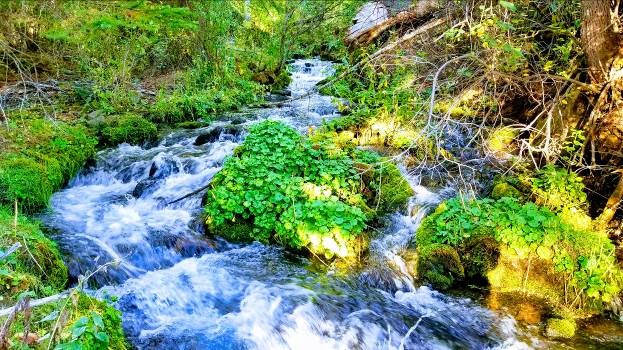Instream Flow Program
In 1973, the General Assembly authorized the Colorado Water Conservation Board (CWCB) to appropriate water rights for instream flows and natural lake levels to preserve the natural environment to a reasonable degree. Since 1973, CWCB has appropriated instream flow (ISF) water rights on nearly 1,700 stream segments covering more than 9,700 miles of stream, and natural lake level water rights on 480 natural lakes. The CWCB has also completed more than 35 voluntary water acquisition transactions.
Program Areas
Instream Flow and Natural Lake Level Rights
These water rights are nonconsumptive, in-channel or in-lake uses of water made exclusively by the CWCB for minimum flows between specific points on a stream or levels in natural lakes. These rights are administered within the state’s water right priority system to preserve and in some cases improve the natural environment to a reasonable degree.

Learn More...
- 2025 Shoshone ISF Acquisition
- Rule 6K rulemaking process
- Water Talk: ISF Program podcast
- Statutes
- Rules
- ISF Law - Stories about the Origin and Evolution of Colorado's Instream Flow Law in this Prior Appropriation State
- ISF Database (CIM)
- Map Viewer
- ISF Structure Search on CDSS
- Water Education Colorado - Special Report: Colorado launches major new series of stream protections
- What do we do to implement the program?
-
- Appropriate new water rights to preserve the natural environment of streams and lakes
- Acquire water, water rights, and interests in water to preserve and improve the natural environment of streams and lakes
- Protect the state's instream flow water rights
- Partnerships
- The CWCB receives recommendations for water rights to be appropriated in stream reaches or natural lakes where a natural environment exists and can be preserved to a reasonable degree by the water available for appropriation of a water right. This effort is accomplished through partnerships with State and Federal agencies, local communities, cities, local environmental groups, water users, and other interested parties.
- Why is the program important?
-
In Colorado’s semi-arid environment, water is scarce with many competing demands placed on it by an ever-increasing population. The CWCB’s instream flow and natural lake level water rights protect diverse environments in Colorado. The ISF Program can address important emerging issues such as water requirements for declining, sensitive, and threatened and endangered species, protection of macroinvertebrate populations and rare riparian vegetation assemblages, or restoration of the natural environment.